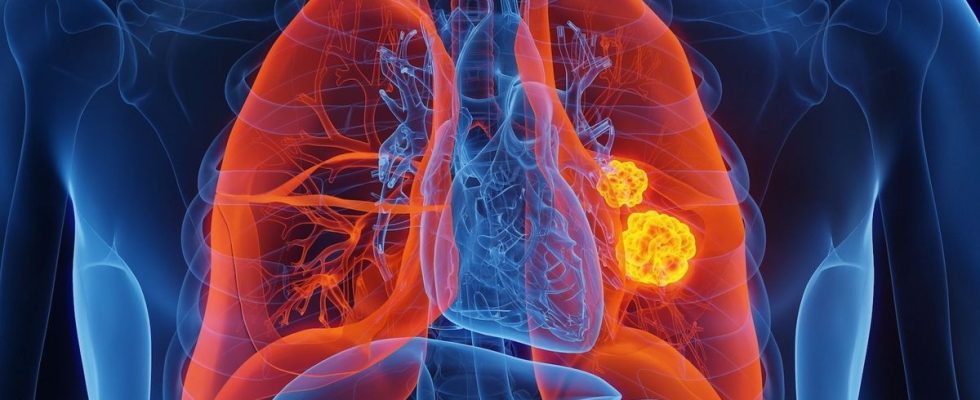Published on
Updated
Reading 3 min.
What if tomorrow lung cancer screening was based on the inhalation of nanoparticles followed by a simple urine test? This is what American scientists are proposing.
Diagnosing the presence of cancer as early as possible is a major challenge for the early care of patients. Faced with lung cancer, the High Authority for Health initiated in 2022 the implementation of a small-scale experiment in lung cancer screening among smokers, screening already in place in the United States and other countries. country, most often based on the use of low dose scanning. But American scientists from the Massachusetts Institute of Technology (MIT) offer a much more practical approach to detecting the disease.
Nanoparticles and a urine test
MIT researchers have developed an easier method for diagnosing lung cancer based on inhaling nanoparticle sensors. They created two formulations of their particles: a solution that can be aerosolized and delivered with a nebulizer, and a dry powder that can be delivered using an inhaler. The particles are therefore inhaled by the patient, who will then be subjected to a simple urine test, with a strip.
For this study, the experts developed special nanoparticles with a kind of DNA barcode, designed to interact with particular enzymes called proteases. Once the particles reach the lungs, they are absorbed into the tissue, where they encounter any proteases that may be present.
Human cells can express hundreds of different proteases, and some of them are overactive in tumors, where they help cancer cells escape from their original location by cutting off extracellular matrix proteins.
These cancer proteases bind with the DNA barcodes of inhaled particles, allowing them to circulate in the bloodstream until they are excreted in urine. The paper test strip can then detect these barcodes and give a positive lung cancer test result.
Encouraging results in mice
To find out if their test works, the scientists genetically modified mice to make them express human lung cancer. After seven weeks of development of the disease, stage 1 or 2 cancer in humans, the mice were subjected to the test. This preliminary step made it possible to develop the right combination of 4 sensors allowing a precise diagnosis and to test it successfully.
This is not the first time that this type of test has been developed by researchers, particularly against ovarian or liver cancer. However, in previous versions, the nanoparticles were injected.
A less invasive and non-irradiating test
This inhaled version allows a less invasive approach for the patient, without having to resort to X-rays, either. It would also allow easy administration of the test in all countries around the world.
“Throughout the world, cancer will be an increasingly widespread pathology, particularly in low- and middle-income countries. The epidemiology of lung cancer is caused by pollution and smoking, so we know that these are contexts where accessibility to this type of technology could have a big impact” indicates Professor Sangeeta Bhatia, lead author of this study.
“The idea would be that you go in to take the test and get a quick response as to whether you need follow-up. We could then take care of patients who have early lesions so that they can benefit from curative surgery or essential medications.” he concludes. The researchers now wish to confirm the effectiveness of their test using human cancer biopsy samples, before starting possible clinical trials.
